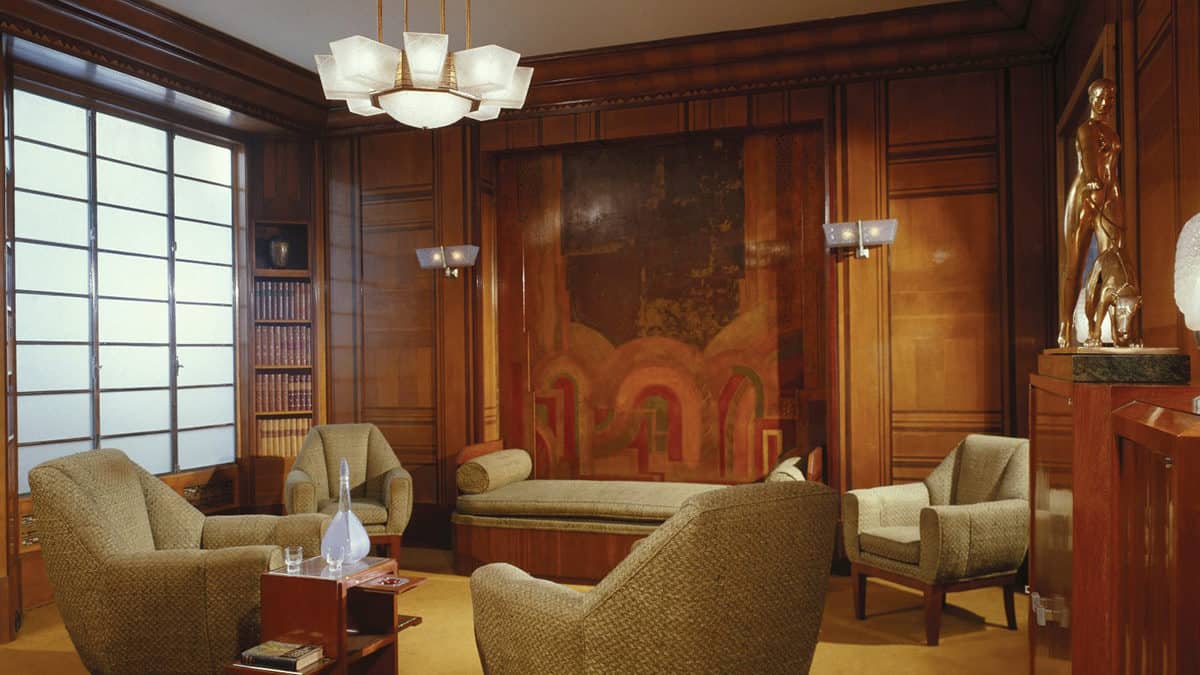Lots of people needed new houses, and in just twenty years, 4 million new homes were built, many in the countryside. Trains were still very important for travel, so many new towns sprang up along the routes of the new railway lines.
Instead of terraces, lots of houses were built in pairs or as we call them, semi–detached. To make the most of their space, people started having balconies and flat roofs where they could enjoy the latest trend, sunbathing! A new addition to houses was the garage, and when some people designed their house all on one level, the bungalow had arrived!
In the middle of the 1920s, the Art Deco style arrived. This was a style that used modern materials like plastic and glass in bold colours and with very decorative shapes.
Fun Facts about Art Deco
- The word “Art Deco comes from a French phrase “Art Decoratif”. It was an extremely popular style Paris, and if you go there today, you’ll still see loads of buildings in this style.
- In the 1920s, the radio began to appear as a regular household accessory. Families would gather around their radio sets to listen to music shows and news broadcasts. There were though a lot less stations to choose from than there are today, and no Fun Kids!
- During the twenties, car ownership increased considerably and houses started to have garages. But you’d struggle to get today’s cars in them – because as cars were smaller then, garages were much narrower!
Classic 1920s and 1930s features?
- The typical 1920s house was slightly smaller than those of previous decades and craftsmanship gave way to the mass-produced. In the 1930s, again properties were still smaller than preceding years, concrete walls were more commonly used in building. Sunbathing was the very latest thing, and many families built flat roofs, pergolas and balconies as sun traps.
- The outside – houses were usually a mix of red brick, pebbledash and half timbering with red clay tile roofs, and the new addition was often the garage. There was also the emergence of the new bungalow with all its rooms on a single level. By the 1930s, the bay window had progressed to angled sides, or was half-round. And the 1930s also saw a significant increase in the number of flats erected across the country.
- Windows – lots of houses had etched or frosted windows, because this gave the owners more privacy and they thought it looked nice. Some people had stained glassed designs above their doors, perhaps with a bright design of the sun bursting with flames.
- Walls – were rather plain and free from decorative plasterwork, but a shimmering or light-reflective paint or wallpaper would have been used – use a soft sheen paint or wallpaper with a similar effect.
- Colour – many chose bold colours including black, white and silver, but softer shades in ice cream colours – pink, peach and pistachio, buff, pale blue, coffee and beige – were also popular.
- Floors – plain polished parquet was popular although linoleum in abstract designs or black and white chequerboard vinyl tiles were also typical. Living area floors were often overlaid with a large rug in geometric patterns. An imposing circular one was often chosen as the centrepiece of a room.
- Lights – a classic lamp featured female figures holding the ball of the lamp.
- Fireplaces – mainly rectangular with plain tiles. Downstairs, coal fireplaces would be fitted with a tiled surround, often in brown or green with a speckled effect and with a stepped profile typical of art deco.
- Furniture – lots of furniture was made out of glass and chrome in strong and streamlined designs.
Let’s go looking for Art Deco buildings!
- The Oxo Tower is one of London’s famous Art Deco buildings – it’s on the south bank of the River Thames.
- The Hoover Building on the A40 is another example of Art Deco – it was built in an Egyptian style with vibrant colours and has an impressive entrance.



